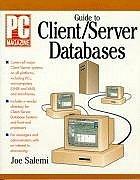Question
1. What would be the IEEE 754 single precision floating point representation of n = -76543210.9876543210 1234 10^18? For explanation, I want you to document
1. What would be the IEEE 754 single precision floating point representation of n = -76543210.9876543210 1234 10^18? For explanation, I want you to document the steps your perform, in this order: (1) What is n in decimal fixed point form (ddd.ddddd); (2) What is n in binary fixed point form (bbb.bbbb), storing the first 25 bits following the binary point; (3) What is the normalized binary number, written in the form 1.bbbbb...bbb 2e , storing 25 bits following the binary point? (4) What are the 23 mantissa bits, after the bits in bit positions -24, -25, ... are eliminated using the round to nearest, ties to even mode; exclude the 1. part which is not stored; (5) What is the biased exponent in decimal and in binary? (6) Write the 32-bits of the number in the order: s e m; and (7) Write the final answer as an 8- hexdigit number.
2. What decimal floating point number does this big-endian IEEE 754 single precision number represent: n = 0x6C843175? For explanation, I want you to document the steps you perform, in this order: (1) What is n in binary; (2) What is the value of the sign bit; What does this value signify about the final number; (3) What are the binary and decimal values of the biased exponent; (4) What is the binary value of the mantissa, with the 1. part preceding the binary point? (5) What is the decimal value of the unbiased exponent; (6) What is the decimal value of the mantissa, with the leading 1. part? (7) What is the final decimal real number, written in the form [-]d.ddddddddd dddddd 10e where d represents a decimal digit 0-9 and there is an optional leading negative sign. Write exactly 15 digits after the decimal point (even if they are 0's) and round the final 15th digit up or down as required based on the value of the 16th digit (16th digit < 5 round down; otherwise, round up).
3. What would be the IEEE 754 double precision floating point representation of 1.3248735989328012498123 3898124124 10^-17. For explanation, I want you to document the steps you perform, in this order: (1) What is n in decimal fixed point form (ddd.ddddd); (2) What is n in binary fixed point form (bbb.bbbb), storing the first 110 bits following the binary point); (3) What is the normalized binary number, written in the form 1.bbbbb...bbb 2e , storing 54 bits following the binary point) (4) What are the 52 mantissa bits, after the bits in bit positions -53, -54, ... are eliminated using the round to nearest, ties to even mode; exclude the 1. part; (5) What is the biased exponent in decimal and in binary? (6) Write the 64-bits of the number in the order: s e m; and (7) Write the final answer as a 16- hexdigit number.
Step by Step Solution
There are 3 Steps involved in it
Step: 1

Get Instant Access to Expert-Tailored Solutions
See step-by-step solutions with expert insights and AI powered tools for academic success
Step: 2

Step: 3

Ace Your Homework with AI
Get the answers you need in no time with our AI-driven, step-by-step assistance
Get Started


